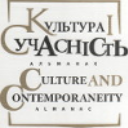РІЗНОМАНІТТЯ ФОРМ ІСЛАМУ: ІНВАРІАНТНІСТЬ І ВАРІАТИВНІСТЬ
DIVERSITY OF FORMS OF ISLAM: INVARIANCE AND VARIABILITY
Author(s): Polina Evaldivna GerchanivskaSubject(s): Islam studies, Comparative Studies of Religion, Politics and religion, Sociology of Culture, Sociology of Religion
Published by: Національна академія керівних кадрів культури і мистецтв
Keywords: Islam; heterogeneity of Islam; forms of Islam; Islamism; Muslim culture;
Summary/Abstract: The purpose of the article is to analyze the nature of the heterogeneity of Islam in the field of Muslim culture and to determine the moderators of the variability of its forms. Methodology. The culturology analysis of Islam in the interdisciplinary space of the social sciences and humanities is the conceptual methodological core of the research. For a comprehensive study of the phenomenon, a civilizational approach was used, which made it possible to realize the uniqueness of the Muslim world as a local civilization and the functional role of the Islamic religion in it. The research strategy is based on system analysis in the author’s interpretation. The phenomenon of Islam is interpreted as an integral system in the totality of relations and connections between the invariant and variable components. Scientific novelty. To study the problem of the diversity of forms of Islam, the author's model of the system method, based on the dichotomy of the invariant and variable components of the phenomenon, was introduced into scientific circulation. The idea of the variability of Islam in the space of Muslim civilization has been verified. The invariant and variable components of Islam and the moderators of their formation are determined. Conclusions. Based on the paradigm of the invariance of the dogma of Islam and the diversity of its interpretation in the chronotope, the core moderators of the variability of the forms of Islam are established: 1) the absence in the Quran and Sunnah of direct prohibitions in relation to certain aspects of worldly life; the absence of a unified religious center that monitors the monotony of interpretation of canonical texts;2) the weakening of the connection between the sacred and the profane, which determined the politicization of Islam (in the form of Islamism of all shades); 3) symbiosis of religion and ethnic culture, which led to the dichotomy “classical-folk” Islam; 4) the correlation of the configuration of Islam with the socio-political structure of society, which, in particular, determined the binary opposition of two doctrines of building a Muslim community: the firs doctrine is based on the idea of the revival of the Caliphate, the second doctrine is based on Sharia rule within national borders,
Journal: Культура і сучасність
- Issue Year: 2020
- Issue No: 2
- Page Range: 3-9
- Page Count: 7
- Language: Ukrainian

